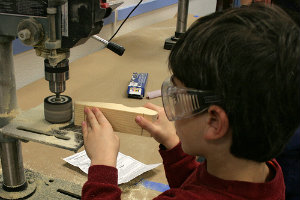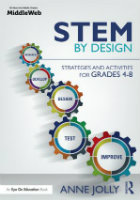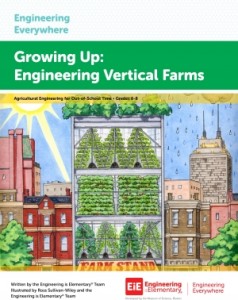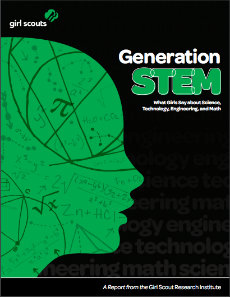Helpful STEM Resources for Summer Planning
A MiddleWeb Blog
 Summer is on the horizon, and your STEM preparation for next fall is likely ramping up – or will be soon.
Summer is on the horizon, and your STEM preparation for next fall is likely ramping up – or will be soon.
If you taught STEM this school year, you’ll be searching for ways to make your lessons even more effective. If you’ll be teaching STEM for the first time, you’re on the look out for information, ideas, and know-how. In either case, where can you find the support you need?
In this blog post I’ve listed some free STEM resources I’ve come across and found useful, particularly for teachers and other STEM leaders. This list of STEM resources barely scratches the surface of what’s available. I’ve simply listed a few sites I like that might whet your appetite.
When you locate other STEM resources you find helpful, please consider sharing these in the Comments section of this post. (We all learn best when we combine and share our knowledge!)
Click away, and I hope you find something that meets your needs.
STEM Education – What and Why?
As you start making STEM plans, take time to get a good handle on what STEM education involves and why you are doing this. I find that an occasional review of STEM basics refocuses me and helps me target important principles to incorporate into lessons.
- What Is STEM? It doesn’t get much better than this short, 3-minute whiteboard video explaining STEM education and its value for your classroom. Use it with your students, too.
- The Heat Loss Project: A STEM Exploration. This STEM-in-action video provides a terrific example of kids teaming up to engineer a solution for a real problem. Analyze this video to find principles you can apply for your STEM lessons. Notice how science, math, and technology are integrated.
- What Makes Something STEM? This post explains why STEM emerged as an education priority and what STEM lessons include. It includes a list of “STEM basics” for lessons and programs.
Some Helpful Lesson Plan Sites
A special caution here. Some of these lessons are actually STEM lessons, while others focus primarily on science or on a fun activity. Be choosey. If you see a lesson you like, tweak it as needed to meet authentic STEM criteria like I’ve listed in this post. Above all, be sure the lesson features teamwork and engages kids in designing and constructing solutions for a real life problem – using an engineering design process.
- eGFI Dream Up the Future is designed to enthuse kids and liven up the classroom with engineering projects. You’ll find STEM lesson plans, activities, and links to other web resources. You and the students will both enjoy this site. Download the first three issues of the eGFI magazine for free.
Engineering Everywhere Curriculum Units provides amazing lesson resources! This site offers you 10 top-notch and well-developed STEM units featuring challenges from ten different engineering areas. You’ll find free videos, posters, flashcards, a materials list, and an educator guide, among other resources. UPDATE: These materials are no longer free but we’ve kept this resource here for review. A rich selection for STEM teachers with a budget. (11/1/21)
- Teach Engineering features lessons correlated directly with Common Core Math, the Next Generation Science Standards, engineering standards, and state standards. The curriculum is updated monthly and covers a variety of topic areas and grade levels.
Interesting Students in STEM Careers
We need more STEM workers in our workforce. Where can we find them? To meet the demand, we need to prepare all of our students with core STEM skills that can make them successful both in STEM fields and in other fields they choose.
Girls face a special problem here – including overcoming gender preconceptions and lack of exposure to STEM careers. And minorities and disadvantaged kids often lack opportunities and access. These resources address a variety of student needs:
- Engineer Girl. This site, created by the National Academy of Engineering, can create an active interest in engineering among girls in grades 5-8. You’ll also find a section for parents and teachers. Click around and enjoy a bunch of great resources, including videos and lesson ideas.
Generation STEM. I keep returning to this free Girl Scout Research Institute publication for information on girls in STEM, and for some practical tips (pp.29-30) on how to support and encourage girls in STEM classes. You’ll see why when you access this free PDF.
- Teaching Boys: the STEM Solution. This post addresses the value that STEM learning brings to young males, many of whom don’t always thrive in traditional school classrooms. You’ll find other links to additional sites featuring boys and learning at the end of the post.
- We Must Have STEM for ALL Our Students. Strategies for teaching STEM are often the strategies that have proved most effective for teaching minorities and disadvantaged students. This post summarizes conditions that create great STEM education that serves these students.
- NEW (2021) Free STEM Resources for Girls and Women Who Want to Work in Data Science, Machine Learning and AI (UC-Berkeley Extension)
Computer-based STEM Experiences
Wondering how to include digital technology in STEM lessons? Technology is seldom the main driver when designing an integrated STEM lesson, but here are some examples of how technology can take the lead in some lessons.
- 2016 National STEM Video Game Challenge. Involve your students in this. They can win in a number of categories. This provides an opportunity for students to learn and apply coding skills to a real world challenge.
- Air Force Collaboratory. The Air Force is inviting young people to help with solving real-world technology problems. The activities are gripping and challenging for young people who are intrigued by problems involving search and rescue, among other things. Use this site for older kids and engage them in integrated STEM challenges that take them from the computer to hands-on investigations and back.
Safety, Safety, Safety

- Safety in the Science Classroom: This PDF document from the National Science Teachers Association contains standards for student conduct, personal safety, precautions involving chemicals and lab equipment, and tips for maintaining a safe environment for experiments. You’ll find this important when working with some STEM activities.
A Blog Brimming with More Tips
Here at MiddleWeb, I’ve been posting ideas, tips and information about teaching STEM since August of 2012. To check out the posts, go to the STEM by Design archive and click through the article summaries. Or you can search with keywords by going to the top right of the page and clicking on the magnifying glass. You can enter a search term like “STEM lessons” (be sure to include STEM in any search string to zero in) and press return.

Hopefully this beginning resource list proves a useful launching pad to your STEM planning for next year. And don’t forget to share your own tips and other resources you’ve found in the Comments section here.



































